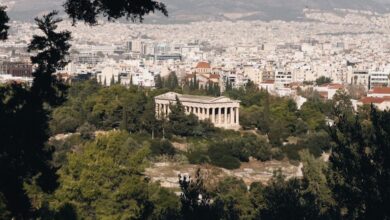How Can You Make a Walking Tour More Interesting
Walking tours are a fantastic way to explore a city, immerse yourself in its history, and engage with its culture. However, some walking tours can feel repetitive or dull, leaving participants wishing for more excitement. To elevate your walking tour from ordinary to extraordinary, consider a few creative strategies that will engage participants and spark their curiosity.
Engage the Senses
One effective way to enrich a walking tour is by engaging the senses. Instead of merely pointing out landmarks, encourage participants to touch, smell, listen, and taste their surroundings. This can include inviting them to feel the texture of a historical building, smell the flowers in a local park, or taste local delicacies from street vendors.
For instance, if your tour passes through a bustling market, allow a moment for participants to sample regional snacks or spices. This multi-sensory approach transforms a passive observation into an immersive experience, allowing participants to create lasting memories tied to the places they visit.
Incorporate Storytelling
Storytelling is a powerful tool that can breathe life into any walking tour. Rather than simply sharing dry facts and figures about a location, weave intriguing narratives that captivate your audience. Share tales of famous figures who walked the same streets or recount local legends and myths that add depth to the cultural landscape.
Consider personalizing stories by relating them to the participants’ experiences. For example, if the tour goes through an area known for its artistic heritage, you might connect the stories of famous artists to the dreams and aspirations of budding creatives in the group. This connection creates a more intimate experience, making participants feel like they are part of the story.
Use Technology Wisely
Today’s technology can enhance the walking tour experience in innovative ways. Consider utilizing apps that provide augmented reality features, allowing participants to see historical images or reconstructions of landmarks as they stand in front of them. This visual context can spark interest and provide a deeper understanding of the historical significance of a location.
Additionally, consider creating a themed playlist that reflects the culture or history of the area. As you pass certain landmarks, participants can listen to relevant music or soundscapes that evoke the spirit of the time or place, enriching the atmosphere of the tour.
Encourage Interaction
Interaction helps to break the barrier between the guide and the participants, making the experience more engaging. Instead of a one-way dialogue, encourage questions and discussions throughout the tour. Ask participants to share their own experiences or thoughts related to the places you visit. This not only fosters a sense of community but also allows for a richer exchange of ideas.
Consider incorporating interactive activities, such as scavenger hunts or trivia games related to the tour’s theme. These activities encourage participants to engage actively with their surroundings and with each other, creating a more vibrant and memorable experience.
Mix Up the Route
A predictable route can lead to boredom, so consider mixing it up. Explore lesser-known paths or hidden gems that are off the typical tourist trail. This not only provides a fresh perspective but also introduces participants to the authentic local culture.
Incorporate unexpected stops along the way, such as a quirky café, a local art installation, or a community garden. These stops can serve as delightful surprises, allowing participants to discover new aspects of the city that they might not encounter on a standard walking tour.
Emphasize Local Culture
To make a walking tour truly special, highlight the local culture and community. Feature local artists, musicians, or storytellers who can share their work or experiences with the group. This inclusion fosters a connection between participants and the community, enriching their understanding of the area.
Consider themed tours that focus on specific aspects of local culture, such as street art, historical architecture, or culinary traditions. This specialization can attract individuals with particular interests and provide a deeper dive into the city’s unique offerings.
Creating Lasting Memories
In the end, the goal of a walking tour is to create lasting memories for participants. By engaging their senses, incorporating storytelling, leveraging technology, encouraging interaction, mixing up the route, and emphasizing local culture, you can transform a standard walking tour into an extraordinary adventure. The more participants feel connected to the experience, the more they will carry the stories and impressions of the journey long after it ends.







